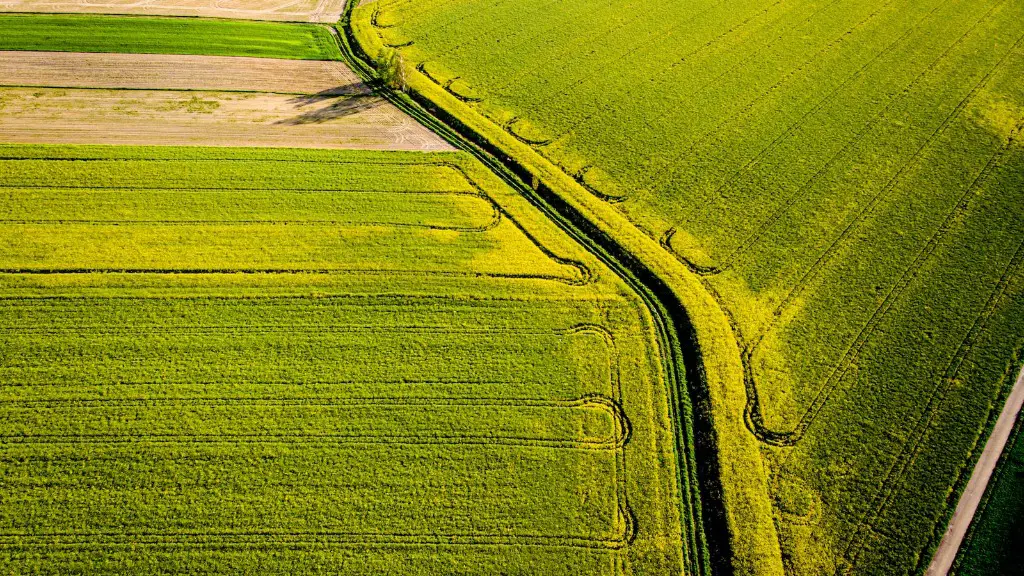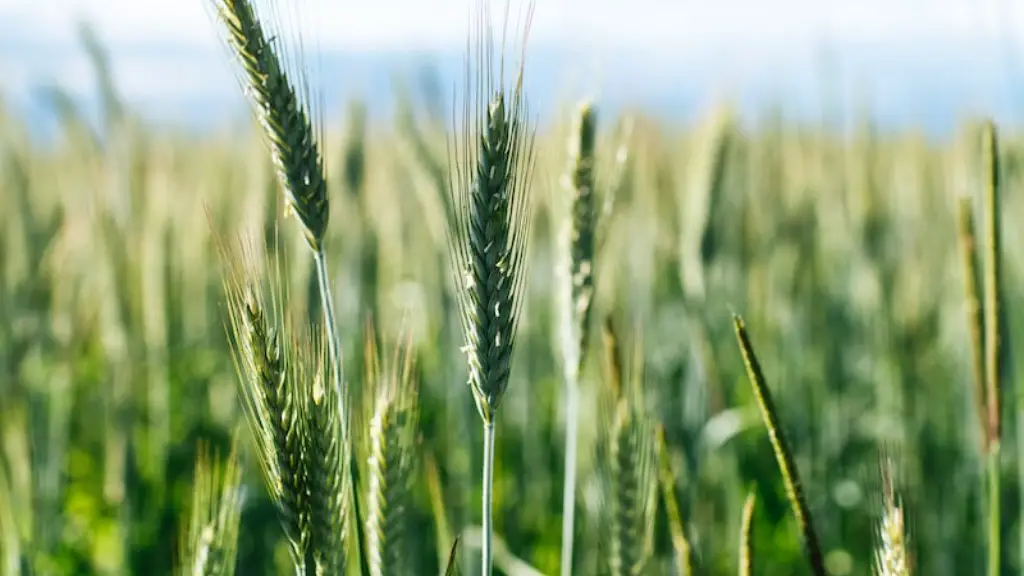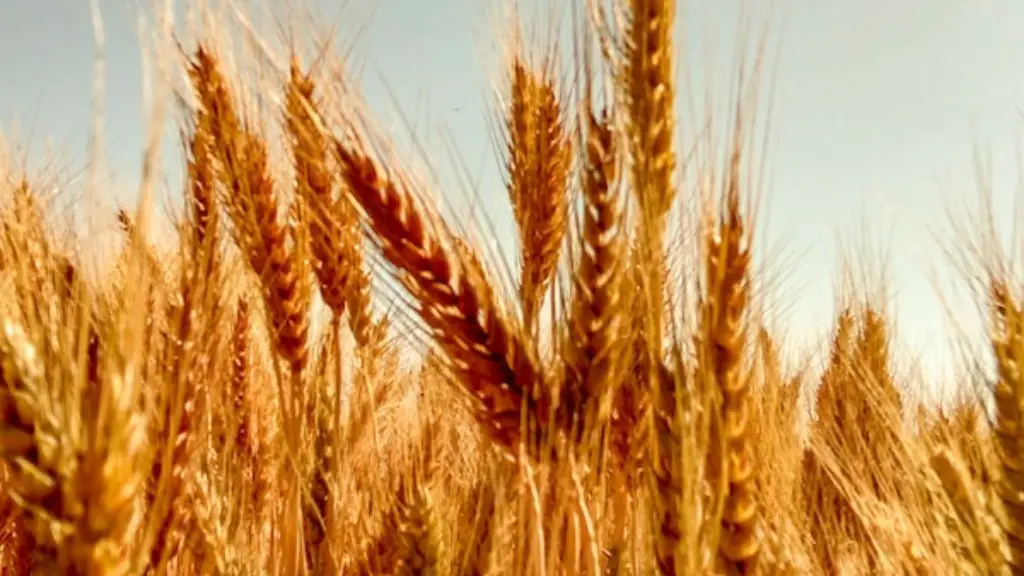Dna technology is used in agriculture to help identify and track plants and animals. This information can be used to help improve crop yields, manage livestock, and select for desired traits in both plants and animals. Dna technology can also be used to help screen for and respond to diseases and pests.
There are a number of ways in which DNA technology is used in agriculture. One way is through the use of genetic engineering to create crops that are resistant to pests and diseases. This can help to reduce the amount of pesticide and herbicide use, and can also lead to higher yields. DNA technology is also used in the development of new plant varieties, and in the production of hybrid seeds. Additionally, DNA sequencing is used to develop genetic maps that can be used to improve the efficiency of breeding programs.
What is an example of DNA technology in agriculture?
DNA technology can be used to increase plant resistance to disease by reengineering the plant to produce viral proteins. Also, the genes for an insecticide obtained from a bacterium can be inserted into plants to allow the plants to resist caterpillars and other pests.
Fingerprints can be used to show whether the seed which the farmer planted was in fact the variety that was chosen. If the fingerprint of the crop matches the fingerprint of the seed, then it is the same variety. DNA fingerprinting may also be used in the future to identify disease infection in crops. Each disease-causing agent, such as a fungus, bacteria or virus, has a unique DNA fingerprint. If the fingerprint of the crop matches the fingerprint of the disease, then the crop is infected with that disease.
How is DNA technology used in food production
Recombinant DNA technology has made it possible to manufacture enzymes that are more suitable for specific food-processing conditions. This is because enzymes that are traditionally isolated from culturable microorganisms, plants, and mammalian tissues are often not well-adapted to the conditions used in modern food production methods.
Recombinant DNA technology has led to the development of a number of new products for use in agriculture, including golden rice, herbicide-resistant crops, and insect-resistant crops. These products have made it possible to grow crops more efficiently and with less environmental impact.
What are 4 applications of genetics in agriculture?
The application of genetic principles has significantly improved milk production in cows and buffaloes, meat production in sheep’s, goats and pigs, and egg production capacity in poultry. These improvements have helped to increase the productivity of these animals, and have made them more efficient in terms of their output.
Since the discovery of the structure of DNA in 1953, our understanding of molecular biology has advanced rapidly. This knowledge has been applied in many different ways, including in the development of new drugs and therapies, in the prevention of disease, in improving agricultural productivity, and in the detection of crime.
What are the benefits of DNA sequencing to agriculture make a list?
Genome sequencing can have a major impact on food security and sustainable agriculture. It can help improve food safety by identifying pathogens and providing information on how to control them. It can also help improve animal and plant health by providing information on genetic diseases and identifying potential breeding stock. In addition, genome sequencing can help reduce the risks from disease outbreaks by providing information on the virulence of pathogens and the susceptibility of hosts. Finally, genome sequencing can help improve agriculture through effective plant and animal breeding.
by developing new, more efficient medicines and vaccines.
by improving animals’ resistance to diseases.
by producing larger, healthier food animals with fewer resources.
All of these benefits contribute to a more sustainable and eco-friendly world.
What are the advantages of genetics in agriculture
Diverse genetic resources are of critical importance to humans because they enable us to select and breed plants with desired characteristics, thus increasing agricultural productivity. Without genetic resources, we would not be able to produce the food that we need to survive. Therefore, it is essential that we conserve and protect these resources so that we can continue to produce food for future generations.
Manipulating the DNA of plants has helped create some very desirable traits. Disease resistance, herbicide and pest resistance, better nutritional value, and longer shelf life are all things that we can enjoy thanks to GMOs. They have also been instrumental in helping us to better understand and manage the environment.
How recombinant DNA technology can be used in different fields like medicine agriculture and industry?
Recombinant DNA technology has been used to produce a number of important vaccines and protein therapies, such as human insulin, interferon, and human growth hormone. It has also been used to produce clotting factors for treating haemophilia, and is being studied for use in gene therapy.
DNA sequencing is the most common form of DNA technology. It is used to determine the order of the nucleotides in a DNA molecule.
Polymerase chain reaction is used to amplify a piece of DNA. It is a very powerful tool that can be used to make many copies of a particular piece of DNA.
DNA cloning is used to create copies of a piece of DNA. It is often used to create copies of genes or other pieces of DNA that are of interest to researchers.
Gel electrophoresis is used to separate pieces of DNA according to size. It is a very useful tool for DNA analysis.
How is DNA technology used in environment
Some applications of traditional biological techniques include using them for specific purposes, such as nitrogen fixation, microbial pesticides, and waste treatment. These techniques have been found to be effective in many different settings and can be used to improve the quality of life for people and the environment.
DNA technology has a wide range of applications, from improving our food supply to creating medical treatments. One of the most well-known applications of DNA technology is genetically modifying organisms (GMOs) to make them more resistant to pests or to increase their nutritional value. Additionally, DNA technology can be used to create microorganisms that can be used for fuel production or bioremediation (cleaning up pollution). In the medical realm, DNA technology is being used to create treatments for a variety of diseases and conditions.
What are the application of DNA sequencing in plants?
Molecular markers are a powerful tool that can be used in a variety of ways to improve crops. They can be used to rapidly improve crops by selecting for desirable traits, to determine the genetic diversity of a population, to identify different cultivars, to study the evolution of a species, and to characterise genetic resources. Molecular markers can also be associated with agronomic traits, allowing breeders to select for crops with desirable agricultural properties.
GMO foods are designed to be healthier and cheaper to produce. Advantages of GMO foods include added nutrients, fewer pesticides, and cheaper prices. Disadvantages of GMO foods can be allergic reactions or increased antibiotic resistance.
Conclusion
Advances in DNA technology have allowed for the development of genetically modified crops. These crops have been altered to be resistant to herbicides or pests, or to produce their own pesticides. This has led to increased yields and reduced costs for farmers.
DNA technology is used in agriculture to help identify different strains of crops, to help choose the best ones for cultivation, and to help monitor crop health. Additionally, this technology can be used to create genetically modified crops that are resistant to pests and disease. This has the potential to greatly increase crop yields and decrease the need for pesticides and other chemicals.





